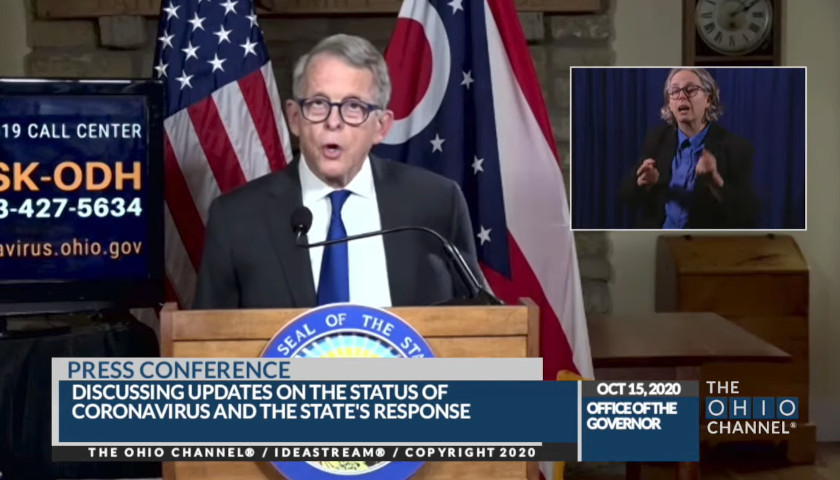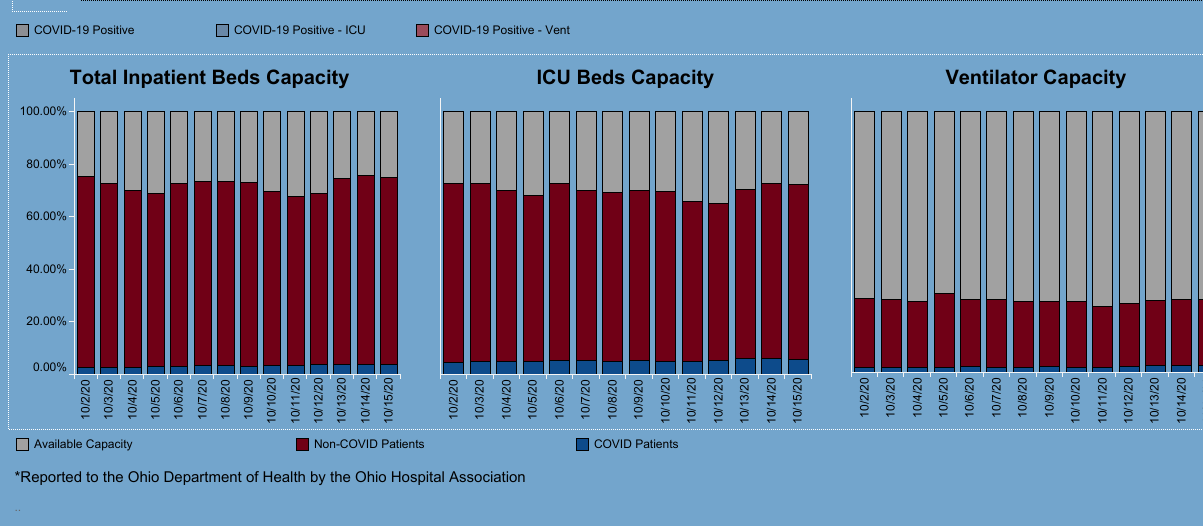COLUMBUS, Ohio – Ohio now has 29 counties colored red by the Ohio Public Health Advisory System (OPHAS), according to remarks made by Governor Mike DeWine during his press briefing on Thursday.
That total represents 65% of Ohio’s population of just under 11.7 million, according to the Governor.
As of today, Ohio has 29 red counties. That is 65% of Ohioans who are living in red counties. pic.twitter.com/6XQtKKqpCb
— Governor Mike DeWine (@GovMikeDeWine) October 15, 2020
Ohio also recorded a new high in ‘reported cases,’ listing 2,178. Intensive Care Unit (ICU) patients rose from 187 on October 2 to 266 patients on October 15. Patients on ventilators in the state climbed from 97 on October 2 to 134 on October 15.
Despite a week-long trend in record ‘reported cases’ and claims that hospitals are filling up, cases by onset date and hospitalizations by admission date peaked in July, while deaths peaked April 28 – according to the Ohio COVID dashboard.
Despite those facts, OPHAS is what the governor referred to Thursday when he said ‘we could be in for a very, very heavy storm’- referring to the spread of COVID.
OPHAS may be setting off warning bells but deeper insight into the system and measures prompted The Ohio Star to inquire of the Governor on Thursday whether the warnings are due to COVID spread or a sensitive system.
The Star asked:
Governor you reviewed the advisory system and pointed out there are a few indicators that are flagged in many of the red counties. Of those, two can be triggered by non-COVID illnesses – outpatient visits and emergency department visits.
And three of them are tied to tests – the new tests you mentioned we’re getting and using, the FDA guidance says they pick up bacterial infections, viral fragments that are old and not contagious, and non-COVID viruses.
The FDA warns that a positive test needs to be considered with other factors.
Five of the seven indicators are wobbly, so how do we know we’re not getting red indicators and high incidence warnings based on non-COVID illnesses and positive tests that are either false or lack additional consideration?
Governor DeWine acknowledged that “no system is perfect and this [OPHAS] is not perfect.” However, he did not comment directly on the efficacy or inefficacy of tests or how COVID-like illnesses may be driving numbers.
DeWine defended the system by indicating that it has several indicators so that decisions aren’t based on one indicator and that the system was “put together with advice from national experts, from people in the Trump administration.”
“We think the system works very well,” DeWine said and “by all indications we’re headed in the wrong direction. The number in the hospital today is about double what it was not too long ago. No one is saying it’s overflowing.”
Although the state of emergency issued on March 9 was pitched as a measure that would allow the state to help hospitals get needed supplies and keep them from overflowing. That was 222 days ago.
– – –
Jack Windsor is Managing Editor and an Investigative Reporter at The Ohio Star. Windsor is also an Investigative Reporter at WMFD-TV. Follow Jack on Twitter. Email tips to [email protected].







Chicken Little at it’s best!